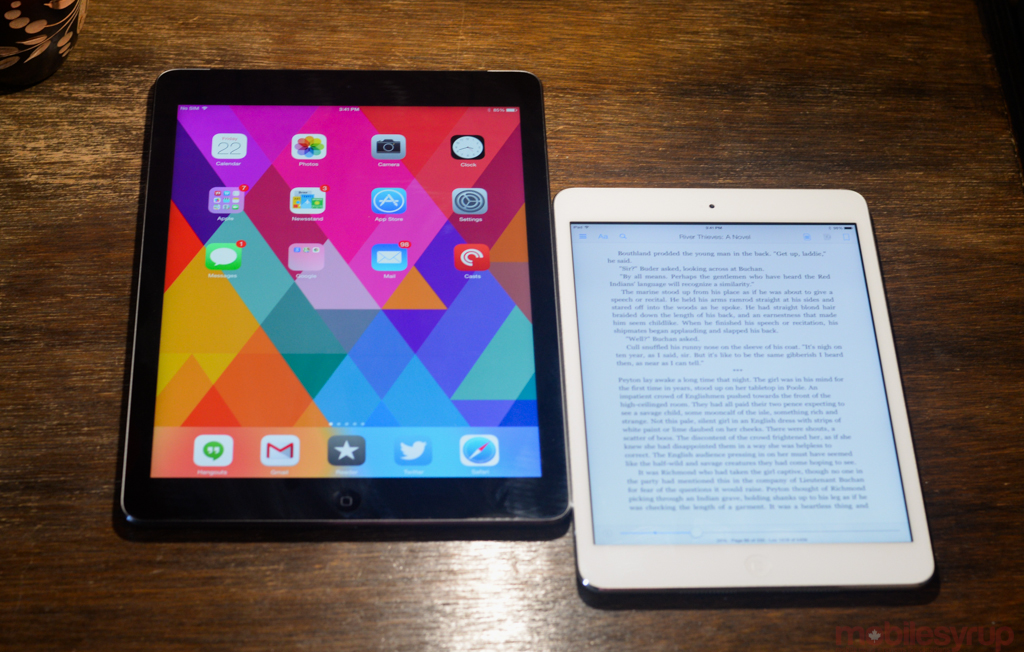
The tablet market doesn’t seem to be as constantly changing as that of the smartphone world. Since the iPad stormed Canada in 2010, we’ve seen refinements from Apple, competition from top Android OEMs, and a handful of excellent Windows 8-based slates that, with their hybrid natures, confuse the situation.
Since our last Buyers’ Guide in December 2013, things have improved in the tablet ecosystem, but the top dogs are still the same: Apple, Samsung, Microsoft and Asus. There are a few new models, though, so let’s dive right in.
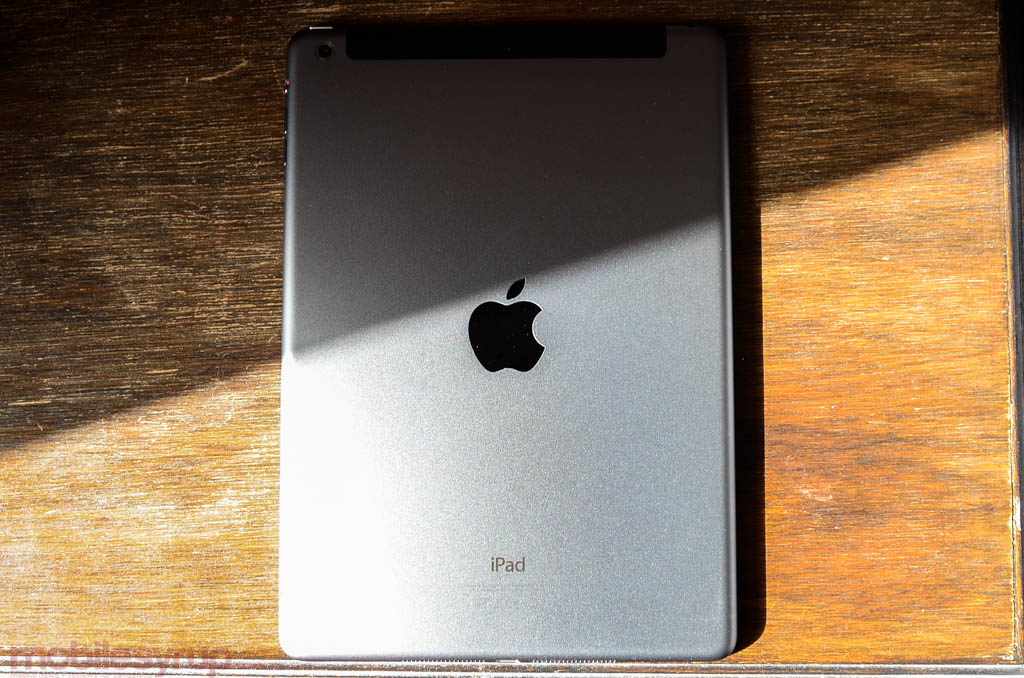
Apple iPad mini with Retina display
The most versatile consumer tablet on the market is still, after 10 months, the iPad mini with Retina display. Thin, light and well-made, with a stunning 7.9-inch 324ppi 2048×1536 pixel display, the only drawback to the smaller iPad is its price.
The Retina iPad mini sports the same screen resolution and A7 chip as its bigger peer, the iPad Air, and the compromises Apple made in reaching a lower price point are forgivable: a smaller battery means a couple of hours less video playback; a slightly cheaper display part means less vivid colours; and a lower-clocked CPU and GPU mean a fraction less speed in apps and games.
In the real world, these changes matter little to the end result, which is a well-rounded tablet with by far the best app selection on the market. With iOS 8 on its way in September, the iPad mini with Retina stands to get rejuvenated with new tablet-optimized features like third-party keyboards and pressure sensitivity with capacitive styluses.
The iPad mini with Retina is great for gaming and even better for reading. It’s light enough to hold in one hand, and thin enough to slip in a small bag or jacket.
Price: Starting at $419 CDN for the 16GB WiFi version, rising to $849 for 128GB LTE version
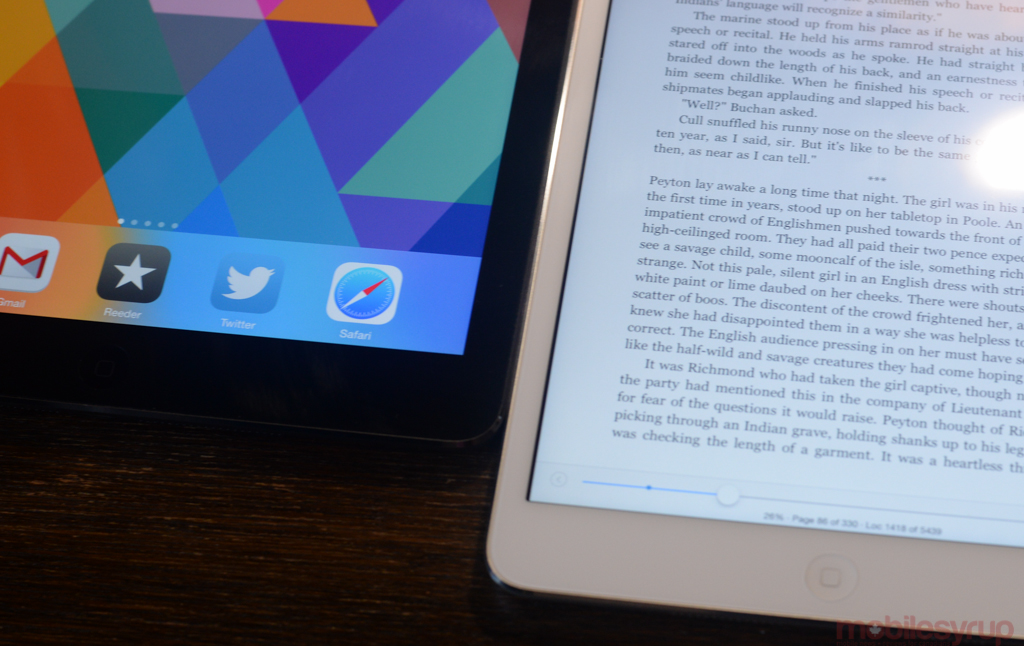
Apple iPad Air
The larger of the two iPad models and perhaps the more versatile, the 9.7-inch iPad Air may not be quite as portable as the Retina mini, but its extra screen real estate offers a superior media consumption experience and, if desired, a better platform on which to type.
The Air is a huge functionality shift from the previously thick-and-bulky iPad 4, and while it doesn’t offer as compelling a PC-like experience as, say, a Samsung tablet or a Surface 2, the variety of apps and games, even those in the productivity field, make up for it.
Price: Starting at $519 CDN for the 16GB WiFi version, rising to $949 for 128GB LTE version
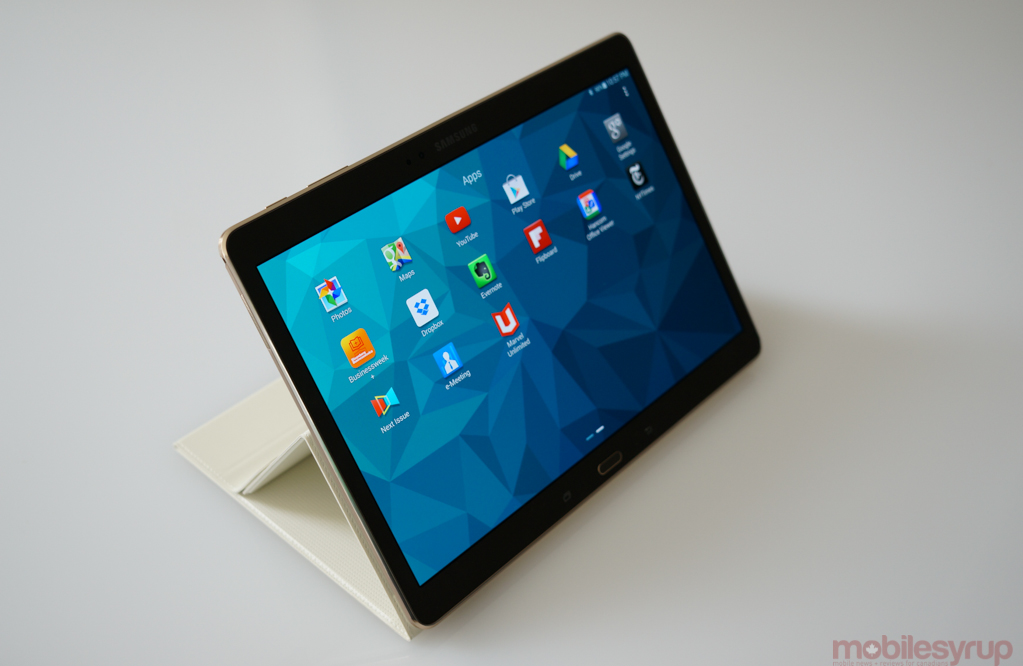
Samsung Galaxy Tab S 8.4 & 10.5
Samsung’s best-ever tablet goes up against the iPad mini with Retina, and for the first time we feel like it deserves similar accolades. The slate’s high-resolution Super AMOLED display is one of the best we’ve ever seen, and Samsung has found the right balance between software design and feature overload.
The Tab S avails itself well for families, as its fingerprint scanner opens up the world of individual profiles, something that Apple has yet to accede. Samsung’s Multi Window, now in its fifth generation, is becoming more functional as more developers integrate its features into their apps.
Speaking of apps, Android tablets have made huge strides in the last year as dev tools, coupled with higher sales, incentivize developers to invest in the tablet ecosystem.
Price: 8.4-inch: $419.99 for 16GB WiFi version, 10.5-inch: $519.99 for 16GB WiFi version
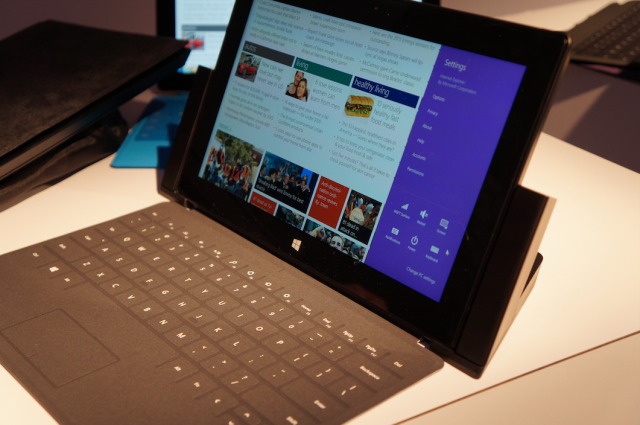
Microsoft Surface 2
With the Surface 2, Microsoft has refined the execution of its original vision, but has not solved the identity crisis. The quad-core Tegra 4 processor is very fast, the 1080p screen is beautiful, and Windows RT 8.1 runs smoothly, with more features and fewer stutters than the original.
But the Surface 2 is also still a tablet designed to be propped on a desk that won’t run desktop apps. The Windows Store is filling up with great titles, and Microsoft’s first-party software is improving all the time. So is the OS, for that matter: with Windows 9 on the horizon, which is expected to be a free upgrade, the Surface 2’s ARM-based future is assured.
Price: $399.99 for the 32GB version, $499.99 for the 64GB version. Add $129.99 for the optional Type Cover, which is highly recommended.
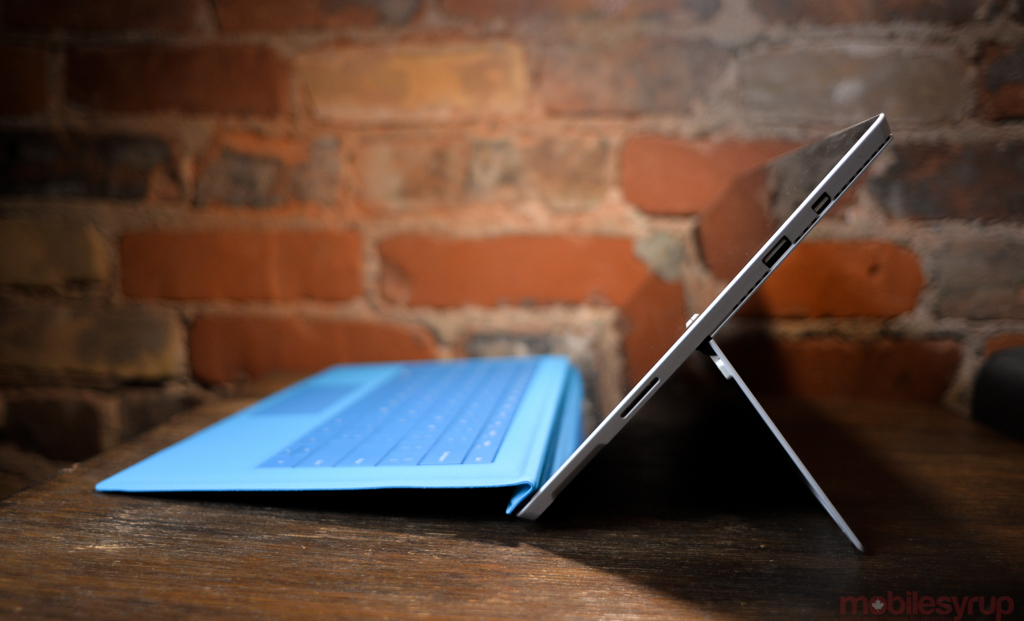
Microsoft Surface Pro 3
The much more powerful big brother to the Surface 2, the Surface Pro 3 takes what made its predecessors good and ramps everything up — including the price.
A fully-functioning computer, including the often-running fan, the Surface Pro 3 features a Core i3 to Core i7 processor, between 4GB and 8GB of RAM, and up to 512GB of storage. Plus, the 12-inch screen is gorgeous.
With the ability to run all Windows applications, including millions that don’t run on the Surface 2, the Pro 3 is a no-brainer for anyone looking for the best hybrid computer on the market today. Improvements made to the Type Cover keyboard, as well as the adjustable hinge, make for better “lapability,” but it’s too big for a tablet and too limited for a PC. It reaches a good middle ground, though.
Price: $849 for the 64GB Core i3 model, rising to $1999 for the 512GB Core i7 version. Add $129.99 for the optional Type Cover, which is highly recommended.
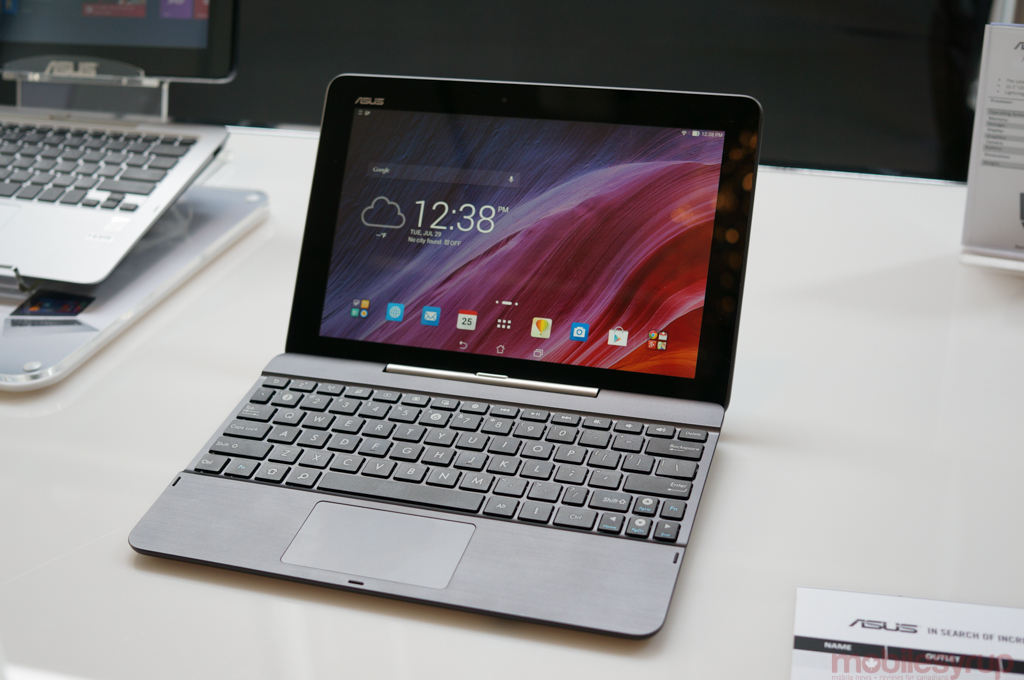
Asus Transformer Pad
Asus’s new Intel-powered Transformer Pad is at once a 10.1-inch Android 4.4 tablet and an excellent laptop replacement. Though it lacks the high-resolution screen of many top-tier Android tablets, Asus’s new, highly-accessible skin, coupled with Intel’s ultra-zippy Bay Trail processor, makes for a killer combination.
The key here is that, undocked, the 10.1-inch slate is merely a decently-performing Android tablet. But docked with its included keyboard, it becomes a de facto laptop replacement. Coupled with the vastly-improved Google Docs/Slides/Sheets apps and a host of other productivity software, the new Transformer Pad finally hits the sweet spot between portability, performance and price.
Price: TBD, like $299.99.
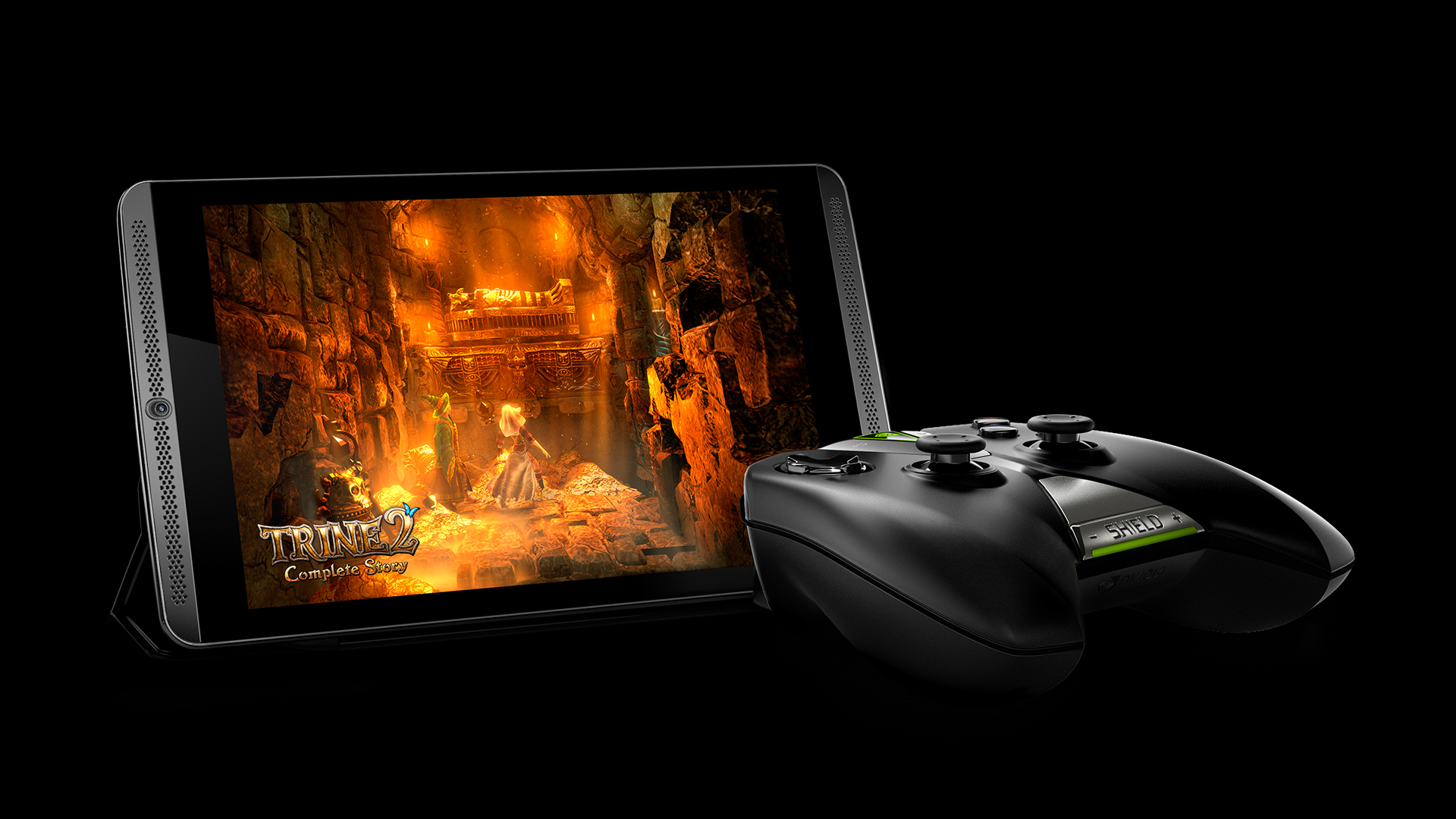
NVIDIA Shield Tablet
The final tablet on our list is the only one we haven’t used, but its pedigree speaks loud enough for itself that we don’t have to.
The 8-inch 1080p tablet sports NVIDIA’s new Tegra K1 silicon, which features four Cortex-A15 cores and a companion Cortex-A7 core, along with the company’s ultra-powerful Kepler-based GPU, that makes Android 4.4.2 fly, and games buttery smooth.
While gaming is the focus of NVIDIA’s first homegrown tablet, it is great for other things, too: it comes with a capacitive stylus for drawing, taking notes and navigating through apps, and the front-facing stereo speakers, combined with the optional case, makes for a fantastic media solution.
Add in the company’s new wireless controller, a $64.99 addition, and the Shield Tablet becomes a fully-blown console replacement. Not only can it plug into any HDMI-ready TV, but it can stream games wirelessly from a companion desktop CPU.
Price: $329.99 for the 16GB WiFi version; 32GB LTE version coming later, likely $449.99. Optional wireless controller, $64.99; Optional tablet cover, $44.99.
MobileSyrup may earn a commission from purchases made via our links, which helps fund the journalism we provide free on our website. These links do not influence our editorial content. Support us here.


